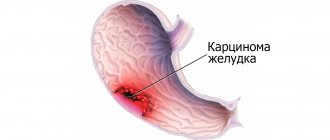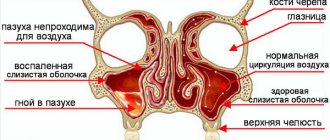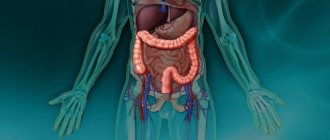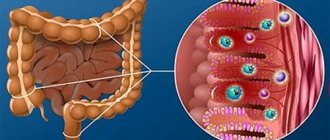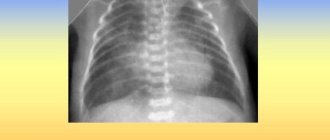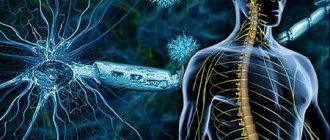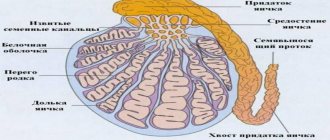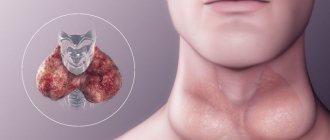Basal pulmonary pneumosclerosis is a pathological condition in which healthy tissue is replaced by connective tissue against the background of inflammatory processes. In this case, there is a violation of elasticity and an almost complete absence of gas exchange, deformation of the bronchi and compaction of the lungs, reducing their size. The lungs stop functioning fully, so the person begins to experience breathing problems. The main danger of the disease is that the body receives insufficient oxygen. Without adequate treatment of basal pulmonary pneumosclerosis, respiratory and heart failure will develop.
Clinical picture
Basal pneumosclerosis, as a rule, develops against the background of other diseases, being only a symptom or complication. Symptoms depend on the stage of development of the disease, the shape and area of the lesion. So, with focal pneumosclerosis, the patient will only be bothered by mild shortness of breath after physical activity, since the tissues have not yet lost their elasticity. The disease itself in this case progresses very slowly.
Over time, an intense morning cough appears, which quickly passes and does not bother the patient at other times of the day. Patients often do not pay attention to this sign at all. But then shortness of breath intensifies, appearing even after minor exertion, the person begins to experience fatigue, and the general condition worsens. The main symptom indicating lung damage is chronic respiratory failure.
When examining and interviewing the patient, the doctor can identify the following signs of basal pneumosclerosis:
- shortness of breath with minor exertion, at rest or during conversation;
- pale skin, cyanosis (due to lack of oxygen);
- rapid breathing;
- decreased performance;
- causeless weight loss;
- breathing is difficult and requires effort;
- retraction of the intercostal spaces, displacement towards the damaged lung;
- muscle weakness, dizziness when changing position and migraine;
- frequent nausea;
- various sleep disorders;
- swelling of the limbs.
With extensive damage, the cough becomes permanent, it is protracted, does not bring relief, and is accompanied by pressing or squeezing pain in the chest. Due to high pressure in the pulmonary circulation, a state of respiratory failure develops, which is characterized by:
- swelling of the veins in the neck;
- pain in the heart area;
- shortness of breath even in a quiet position;
- apathy and indifference;
- the appearance of extraneous noise in the ears;
- throbbing in the upper abdomen.
In the final stages, kidney function is disrupted, the amount of urine decreases, the liver increases in size, and extensive swelling appears.
Why is pulmonary pneumosclerosis dangerous?
The disease has unpleasant symptoms:
- the patient has difficulty breathing, the more the disorder develops, the more shortness of breath manifests itself;
- the skin acquires a bluish tint (cyanosis);
- in the initial stage the patient sometimes coughs a little, but in the later stages the symptom becomes painful;
- pneumosclerosis affects the condition of the whole organism - the patient quickly gets tired.
And no less unpleasant consequences:
- as the disease progresses, it leads to chronic respiratory and heart failure;
- weakened immunity allows infections that can lead to death.
Limited pneumosclerosis worsens health, but has a slight effect on respiratory processes (however, it is better not to start it). At the same time, diffuse pneumosclerosis covers one or both lungs. Complications of a limited (partial) type:
- reduction of part of the affected organ;
- purulent inflammation.
A feature of the diffuse type is a rigid lung. This means the organ loses elasticity and is incapable of deformation. Occurs due to compaction of connective tissue. If the lung is not able to accommodate the amount of air necessary for the functioning of the most important systems of the body, the lack of oxygen affects the functioning of all organs, because breathing is something a person cannot live without.
Reasons for the development of the disease
Basal pulmonary pneumosclerosis is often the result of a person’s unsatisfactory mental state. Constant stress, excessive physical activity, accumulating fatigue and problems lead to aggressiveness and irritability. A tense state also negatively affects physical health. The lymphatic system loses the ability to supply all the necessary elements to the cells.
What is it - pneumosclerosis in the basal parts of the lungs? This is a pathology of the respiratory system, which threatens the development of heart failure and oxygen starvation. The disease is often concomitant. Causes of basal pneumosclerosis:
- tuberculosis;
- chest injury;
- Chronical bronchitis;
- viral pneumonia;
- emphysema;
- alveolitis;
- Beck's disease;
- foreign body entering the bronchi;
- radiation injury;
- parenchyma;
- sarcoidosis;
- other hereditary and genetic diseases;
- unfavorable external environment.
In each case, when diagnosing, the doctor notes the presence of additional diseases of the respiratory system that the person does not treat. This is accompanied by a weakened immune system, taking medications (especially broad-spectrum antibiotics) without the advice of a doctor and in dosages that exceed the norm.
The main provoking factor of basal pneumosclerosis is a person’s professional activity. People employed in industrial or manufacturing enterprises receive certain harm. The risk group includes miners, mechanics, plumbers, masons, chemical analysis laboratory assistants, electric welders, and workers in contact with cement, asbestos, and marble.
The following factors can affect the formation of sclerotic processes in the lungs:
- left ventricular failure;
- toxic effects of medications;
- pulmonary artery thrombosis;
- radioactive exposure;
- decreased immunity (including due to autoimmune diseases).
Classification
Pneumosclerosis occurs:
- Limited – small-focal, medium-focal and large-focal. A limited or local form of the disease is characterized by damage to a certain area of the lung while maintaining gas exchange function.
- Segmental - damage to a segment of the lung due to bronchial obstruction or pulmonary artery thrombosis.
- Lobar - damage to a lobe of the lung against the background of lobar pneumonia.
- With diffuse pneumosclerosis, the entire lung is affected, it becomes rigid, ventilation and gas exchange function are impaired.
- Mixed form.
pneumosclerosis
Depending on the damage to the pulmonary structures:
- Alveolar pneumosclerosis,
- Interstitial pneumosclerosis,
- Perivascular sclerosis,
- Peribronchial pneumosclerosis.
Pneumosclerosis is divided into basal and basal. In the first case, the foci of compaction are located in the hilar part of the lung, and in the second - along the periphery of the organ.
Diagnosis of the disease
To identify basal hilar pneumosclerosis or another type of disease, it is necessary to undergo diagnostics. From time to time, it is recommended to undergo examinations for people who are at risk, athletes, patients with a predisposition to diseases of the respiratory system, and elderly people (especially men who suffer from pneumosclerosis more often than women).
The main diagnostic method is chest x-ray. Pathological changes will appear in the form of characteristic zones. The CT method is also used, but quite rarely. When visualized on a computed tomography scan, altered areas of the lung are also visible. Diagnosticians can evaluate the inflammatory process and pathological neoplasms.
Bronchoscopy, that is, the introduction of a small camera into the organs of the respiratory system in order to detect deformations, will help determine pneumosclerosis of the basal parts of the lungs. The procedure (even despite the administration of painkillers) is very unpleasant, but it allows you to get an accurate result. Spirography is also performed - a study of respiratory function using a special apparatus.
At the initial visit, the doctor conducts an examination and collects anamnesis. A preliminary diagnosis is made based on the following signs of the disease:
- reduction of lungs;
- distortion of percussion sound;
- vesicular noise.
The reasons for the examination are given by a rapid pulse and hypertension, which are also observed with pneumosclerosis of the basal parts of the lungs. Additionally, the patient may be referred to a cardiologist and other specialized specialists to determine the cause of the disease.
Treatment
Treatment of the disease is usually carried out by therapeutic specialists - a therapist and a pulmonologist (a doctor specializing in lung diseases). Patients with an acute inflammatory process in the lung tissue or with the development of complications require treatment in a hospital setting in the pulmonology department. The key role in the treatment of the disease belongs to the elimination of its root cause - the etiological component.
Limited (local) pneumosclerosis, which does not manifest itself clinically, does not require active treatment. In cases where the pathology is prone to exacerbation of inflammation (pneumonia and bronchitis often develop), antibiotics (cephalosporins, protected penicillins, carbopenems), mucolytics (Ambroxol, Bromehexidine, Fcetylcysteine - ACC, Carboistein, etc.), expectorants, bronchodilators (Salbutamol) are used , Formoterol, Terbutaline). They also resort to therapeutic bronchoscopy in order to improve the passage of fluid through the pulmonary tree. In case of development of heart failure, drugs of the glycoside series and drugs containing potassium are used. And in the event of the development of allergic processes, glucocorticosteroids are prescribed.
The use of physiotherapeutic procedures allows you to achieve a positive result. These include electrophoresis, applications with minerals, the use of baths, the use of high-frequency currents, etc. Oxygen therapy (oxygen treatment) is highly effective. It can significantly improve the patient’s condition and slow down the development of the pathological process. Breathing exercises are also widely prescribed (see the corresponding section).
A limited form of the disease, advanced fibrosis and cirrhosis, decay and suppuration of lung tissue require surgical treatment (removal of the area of the organ affected by the pathological process). The newest word in the treatment of pulmonary fibrosis is stem cell therapy. It allows you to restore the original structure of the lung tissue and significantly improve their main function - gas exchange. In the case of severe, widespread tissue changes, the only treatment option is to transplant a donor organ into the patient.
Oxygen therapy
Oxygen therapy is considered one of the main methods of treating lung diseases. It consists of using an oxygen gas mixture, where the main component is humidified oxygen. This method allows you to compensate for the lack of oxygen in the patient’s tissues, which leads to an improvement in his condition due to the normalization of metabolic processes. Oxygen is supplied to patients through special devices - oxygen masks and tubes, through an endotracheal tube or tracheostomy. Very rarely, due to the inconvenience and obsolescence of the method, oxygen tents are used.
Therapy methods
Treatment of basal pulmonary pneumosclerosis largely depends on the form and severity of the disease. It is important that the decision on the need to use certain methods of therapy can only be made by the attending physician (therapist or pulmonologist). With limited pneumosclerosis, special treatment may not be required at all, but this is only if the patient’s condition is satisfactory.
A patient with basal pneumosclerosis is recommended to lead a healthy lifestyle and undergo regular examinations by a specialist. This will help prevent the progression of pathology. In medical practice, the following techniques can be used to treat the disease:
- drug treatment;
- physiotherapy;
- diet therapy;
- surgical intervention;
- oxygen therapy;
- physiotherapy;
- some traditional medicine.
It is strictly forbidden to take any measures on your own. This may not only be ineffective, but also pose a health hazard. It is important that treatment of basal pulmonary pneumosclerosis should be aimed at eliminating the underlying disease, which caused the development of pathological processes in the tissues of the respiratory organs.
How to treat pulmonary pneumosclerosis
Treatment is prescribed by a pulmonologist after conducting a series of diagnostic studies. X-rays are indicated, and the stage of the disease is determined by CT or MRI. As a rule, drug therapy is prescribed: anti-inflammatory, antimicrobial, drugs against infections. In some cases, surgery is required to remove the affected part of the lung.
To restore respiratory function, the patient does specialized gymnastics during treatment and rehabilitation. Bed rest is prescribed only at high temperatures. Cellular metabolism is supported by oxygen therapy. An important part of treatment is boosting immunity. For this, vitamin therapy and proper and healthy nutrition are used.
Innovative techniques
A modern method of therapy is the use of stem cells. This allows the structure of the organ to be completely restored and its functioning to be normalized. Stem cells can transform into cells of any tissue. But the procedure is expensive, since it is very difficult to obtain the material.
Stem cells are injected into the patient's body intravenously. They move with the blood to the affected organ, where they replace tissue. Over time, the lungs acquire normal size, and their original elasticity and firmness return. At the same time, the functioning of the heart muscle and nervous system is normalized, the immune system is strengthened, and hormonal levels become balanced.
Another new technique that does not promote tissue regeneration, but is aimed at improving metabolism in cells, is oxygen therapy. The essence of the procedure is that the body is saturated with oxygen using special masks, tubes and catheters.
Causes of pneumosclerosis
This pathology occurs when part of the lung is damaged or involved in the inflammatory process.
The most common causes of pneumosclerosis are:
- Inflammation of the pulmonary parenchyma. This primarily concerns pneumonitis and prolonged severe pneumonia. At the site of extensive inflammation, cells called fibroblasts begin to proliferate. These cells synthesize collagen fibers, which make up connective tissue. Thus, pneumosclerosis occurs over time at the site of the inflammatory process.
- Necrosis of parenchyma. May occur due to inflammation, damage, infarction, or gangrene of the lung. Part of the alveoli dies under the influence of one of the listed factors, and necrotic masses appear in this place. In the tissue-free space of necrosis, fibroblasts are activated and connective tissue appears. This mechanism acts in any necrotic process.
- Inflammation of the bronchial tree. Chronic bronchitis and obstructive pulmonary disease lead to remodeling of the bronchi, replacement of the normal structures of their walls with connective tissue. Over time, connective tissue cords also appear around the bronchi, and the stroma becomes larger. Later, the parenchyma is involved in the process, which leads to pneumosclerosis.
- Atelectasis. A lung that has collapsed as a result of external or internal causes can eventually fill with air again and function as a healthy organ. But with the long-term existence of the pathology, connective tissue begins to form in areas of atelectasis. This occurs due to insufficient blood supply to the pulmonary parenchyma. Connective tissue forms moorings that tighten the lung. Gradually, the entire area of atelectasis undergoes pneumosclerosis.
- Dust lung diseases. This group of diseases is called pneumoconiosis. They occur in representatives of certain professions: miners, builders, bakers. Small dust particles present in the air of the work area settle in the lung tissue. The process of activation of fibroblasts by dust has not been fully studied, but it is known that diffuse spread of dust throughout the lungs leads to the same diffuse pneumosclerosis. In many areas of the lungs, connective tissue begins to appear simultaneously, gradually replacing normal parenchyma.
- Idiopathic pulmonary pneumosclerosis. This is a pathology whose cause is unknown. Sometimes it is impossible to establish what preceded pneumosclerosis. Connective tissue begins to grow in a healthy lung against a background of complete well-being. The mechanism of its formation in this case is not clear.
Medicines
There are no special medications developed for the treatment of basal pulmonary pneumosclerosis. Drug therapy is aimed at eliminating the disease that caused the pathological changes. Most often, the following groups of drugs are used in treatment:
- antibiotics;
- cardiac glycosides (Digoxin, Isoniazid, Strophanthin);
- mucolytic drugs (“Lazolvan”, “Erespal”, “Acc”, “Ascoril” and others);
- glucocorticoids;
- angioprotectors (to improve blood supply);
- hormones (to stop the inflammatory process);
- syrups and tablets with expectorant properties;
- detoxification drugs ("Penicillamine")
- anti-inflammatory drugs.
Vitamin therapy is an obligatory component of drug treatment. It is necessary to strengthen the immune system and improve the functioning of internal organs, improve the general condition of the body. For a patient with basal pneumosclerosis, vitamins A, C, E, and group B will be useful.
Patients are often prescribed physical therapy. The most popular in the treatment of the disease in question are electrophoresis and ultrasound with novocaine. Such techniques can be used only in the absence of pulmonary insufficiency, otherwise severe complications will arise. Positive dynamics at almost any stage of the disease can be achieved using inductothermy, electrophoresis with iodine, and ultrasound irradiation.
Pneumosclerosis - symptoms
For reference. Manifestations of pneumosclerosis depend on its prevalence.
With a limited form of this pathological process, a dry cough may occur. Productive
cough with a small amount of sputum. Often this type of pneumosclerosis is completely asymptomatic and is an accidental radiological finding.
Diffuse pneumosclerosis most often has the following manifestations:
- Cough. It can occur when the body changes position in space, during physical activity, or spontaneously. More often it is dry, less often – poorly productive.
- Signs of respiratory failure. These include shortness of breath, which occurs first with significant exertion, and then at rest, as well as cyanosis of the nasolabial triangle and fingers, which eventually becomes total cyanosis.
- Signs of heart failure. This group of symptoms includes swelling that appears first in the legs and then throughout the body, enlarged liver, and interruptions in the functioning of the heart.
- Asthenovegetative syndrome. It includes weakness, fatigue, bad mood, drowsiness.
For reference. In the case of large areas of cirrhosis, visual signs of pathology are added to the main symptoms: retraction of the intercostal spaces, reduction of the affected half of the chest, and lag in the act of breathing.
Folk remedies
Treatment of basal pneumosclerosis with folk remedies is acceptable in the early stages of the disease. Such methods will help maintain the general condition of the patient, prevent complications and speed up recovery. Traditional medicine recommends taking aloe tincture one tablespoon three times a day. To prepare such a potion, you need to take 3-4 aloe leaves, grind them into pulp, add two tablespoons of honey and 100 g of red wine. All ingredients must be mixed until smooth. The product should be stored in the refrigerator.
An excellent antiseptic with a sedative effect is a tincture of eucalyptus leaves. The leaves need to be crushed and pour boiling water, then add honey and leave the mixture for 15 minutes. The product must be taken one tablespoon in the morning and evening. Good results from traditional medicine can only be expected if they are prepared correctly and used as directed by a doctor. Consulting a therapist before using alternative medicine recipes is necessary, otherwise you may unknowingly only worsen your health condition.
Diagnostics
Pneumosclerosis is a diagnosis that is not difficult to establish. To do this, use the following diagnostic measures:
- Physical examination. Includes percussion and auscultation of the patient's lungs. When percussing over the pathological focus, dullness of the percussion sound is heard. On auscultation, weakening of vesicular breathing, dry or varied moist rales are heard.
- General blood analysis. In most cases it is uninformative. It is used in educational processes - pneumonia and bronchitis. In this case, in the general analysis, leukocytosis and accelerated ESR are observed.
- X-ray of the chest organs. It is used most often and has important diagnostic value. Foci of pneumosclerosis look like areas of clearly limited darkening. With diffuse pneumosclerosis, a “honeycomb” lung is observed - areas of healthy parenchyma are located in the form of a honeycomb between the connective tissue.
- Computed tomography and MRI. They provide more information about the condition of the lung parenchyma and bronchial tree than radiography. With their help, you can see in a three-dimensional image areas of pneumosclerosis and the cause of their occurrence.
- Biopsy of lung tissue. Rarely used. It has diagnostic value if the cause of pneumosclerosis is dust. Using microscopic and histochemical examination of lung tissue, the specific type of dust is determined.
Prevention of pathology
The main measure for the prevention of pathology is the prevention or timely treatment of all inflammatory, infectious and other diseases of the respiratory system. In addition, in order to prevent pulmonary pneumosclerosis, experts recommend:
- to refuse from bad habits;
- change your job if your current job requires interaction with toxic substances (if this is not possible, then you need to take care of respiratory protection and undergo regular medical examinations to identify the disease at an early stage);
- perform breathing exercises;
- take daily walks in the fresh air;
- Healthy food;
- take vitamin-mineral complexes (vitamins should be taken as prescribed by a doctor);
- undergo medical examination from time to time.
Symptoms
Due to the fact that pneumosclerosis often occurs together with other diseases or after them, it is difficult to identify any individual symptoms. However, there are signs of pulmonary pneumosclerosis that will help the doctor make a diagnosis:
- Cough. At first it only bothers me occasionally. Gradually, the cough will intensify and purulent sputum will appear. This symptom is most characteristic of diffuse pneumosclerosis.
- Shortness of breath, like the previous symptom, does not appear immediately. Worry should be caused by shortness of breath, which is disturbing during rest, although at the very beginning it occurs only during physical work. Interstitial localization, in which the connective tissue of the respiratory organs is affected, is characterized by rapid breathing with short exhalation.
- Cyanosis is a bluish color of the skin and mucous membranes. Occurs due to hypoventilation of the alveoli, the microscopic air sacs in the lungs.
- Moist rales are detected in focal or segmental pneumosclerosis. They are often auditioned in one of the organ sections.
Forecast
With pneumosclerosis of the lungs, the prognosis and life expectancy depend on the stage of the disease.
In the focal form, the prognosis is favorable. In this case, respiratory failure rarely develops.
With the diffuse variant, the prognosis is significantly worse. Cor pulmonale and right ventricular heart failure are formed.
Treatment of concomitant bronchopulmonary diseases will significantly reduce the further progression of pathological changes in the lungs.
Pneumosclerosis - treatment
For each type, doctors use separate methods. Treatment of pulmonary pneumosclerosis begins with a full examination and determination of the type and degree of infection. There are 3 stages according to the ICD code:
- Pneumofibrosis or fibrotic degree, when the connective tissue is adjacent to the pulmonary tissue.
- Pneumosclerosis is a common sclerosis degree. Gradual compaction and replacement of parenchyma.
- Pneumocirrhosis is the most difficult case, when the alveoli, bronchi and vessels are completely replaced by pathological tissue. With cirrhosis, the pleura thickens and shifts to the damaged part of the mediastinal organs.
After diagnosing the disease, the patient is admitted to the hospital. The pulmonologist decides how to treat pneumosclerosis and prescribes expectorants, mucolytics, antimicrobials or bronchodilators (bronchoalveolar lavage). Cardiac glycosides are used for pneumocardiosclerosis; in case of allergies, glucocorticoids are used.
Physical therapy, chest massage, physical therapy, and oxygen therapy can be used. If the disease process has become protracted, partial resection is required. Quite recently, a new method of using stem cells was invented: the structure of the organ and gas exchange function are restored, and the effect of its use is impressive.
Treatment with folk remedies
Methods that have been used for centuries cannot be ruled out. Treatment of pulmonary pneumosclerosis with folk remedies in combination with medications will shorten the duration of the disease. For this purpose:
- Eucalyptus oil is used for inhalation, and a decoction of leaves is used for drinking. Patients notice that after just a few sessions the sputum is cleared better.
- Onions - there are many recipes for coughs. Helps with honey or as a decoction.
- Aloe or agave. The juice from the leaves is mixed with honey and taken in a tablespoon.
Pneumosclerosis - diagnosis
Knowing what pneumosclerosis is and why it is dangerous will help you contact a medical facility in time. Diagnosis of pneumosclerosis involves the following examinations:
- X-ray of the lungs. The disease is determined by the absence of symptoms. X-ray signs reflect the picture of diseases that accompany pneumosclerosis - bronchiectasis, pulmosclerosis, emphysema, chronic bronchitis.
- Bronchoscopy. It determines complications resulting from previous inflammatory processes.
- Bronchography, MRI and CT of the lungs are performed only when detailing of individual areas is necessary after radiography.
